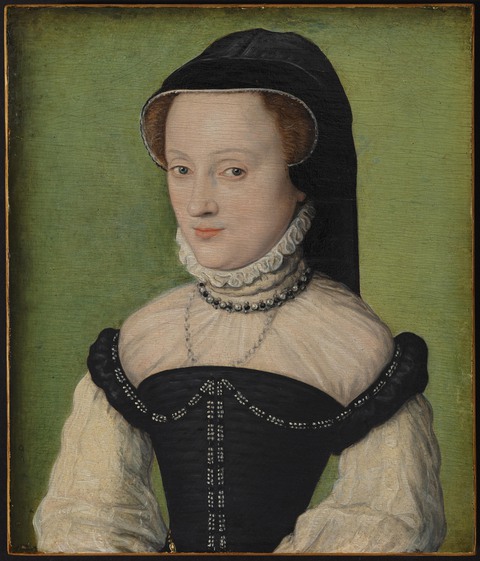Marks, Inscriptions, and Distinguishing Features
None
Entry
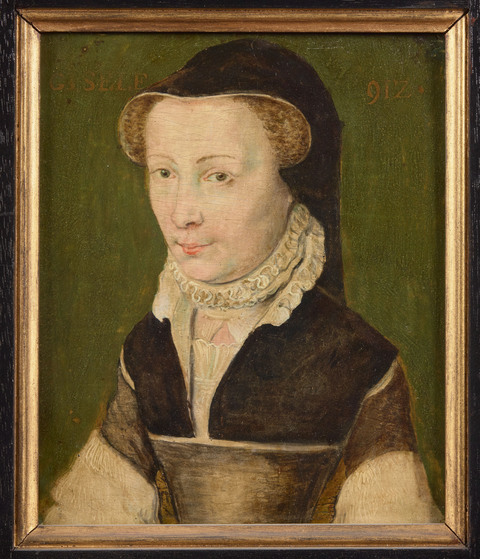
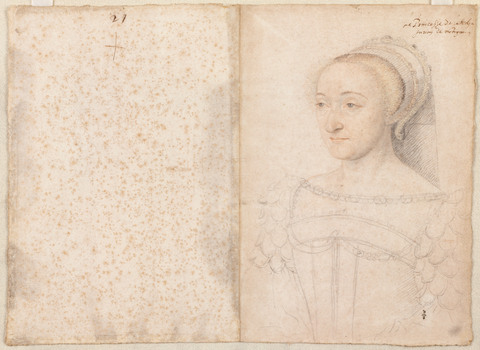
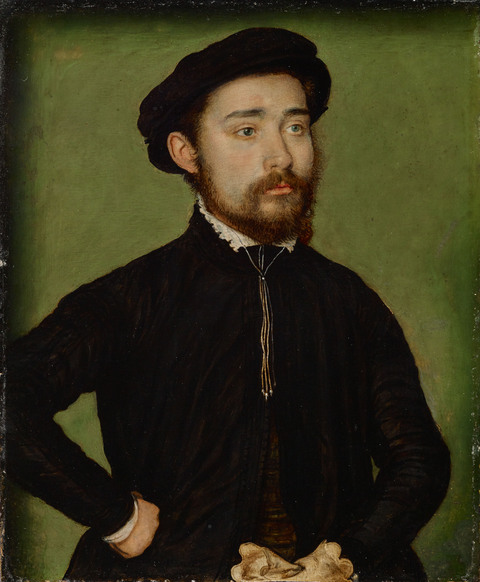
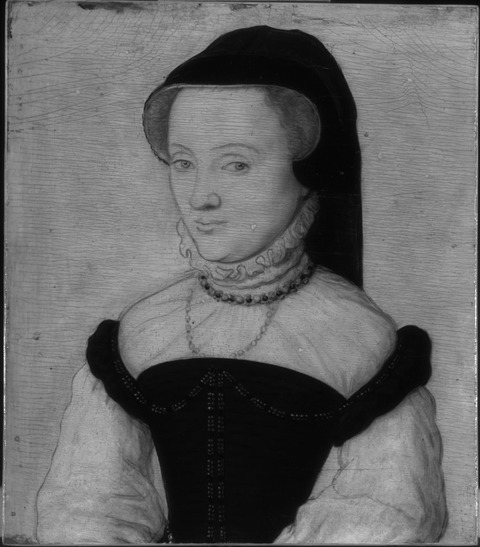
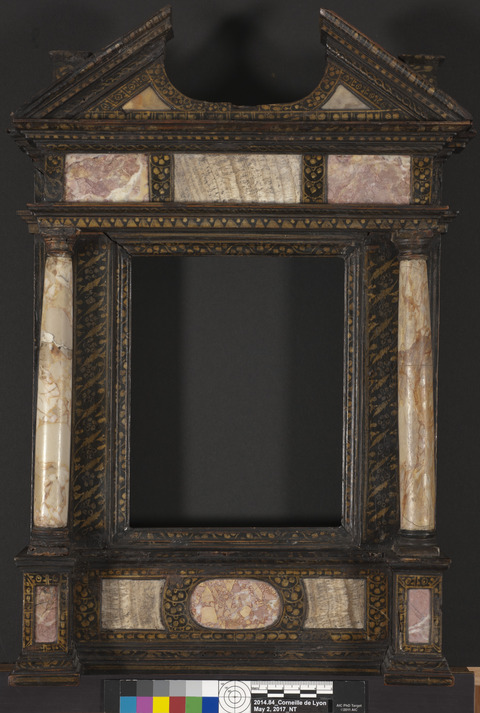
Author
Provenance
Possibly Lord Boston, Hedsor, Buckinghamshire, England.21
Probably (David M. Koetser, London), about 1945.22
Mary Charlotte Hunter (1881–1971), near Reading, by 1949;23
Possibly purchased by (John Mitchell, London).24
(David M. Koetser, New York and London);25
(Ivan Podgoursky (1901–1962), New York), by 1955.26
(John H. Folman, Bronxville, NY);
G.H.A. Clowes, Indianapolis in 1957;27
The Clowes Fund, Indianapolis, from 1958–2009, and on long-term loan to the Indianapolis Museum of Art since 1971 (C10026);
Given to the Indianapolis Museum of Art, now the Indianapolis Museum of Art at Newfields, in 2014.
Exhibitions
The Museum Association of Midwestern University, Gallery of the Museum, Wichita Falls, TX, 1955, Collection of Count Ivan N. Podgoursky, New York, no. 9;
John Herron Art Museum, 1959, Paintings from the Collection of George Henry Alexander Clowes: A Memorial Exhibition, no. 18;
Indiana University Art Museum, Bloomington, 1963, Northern European Painting: The Clowes Fund Collection, no. 5.
Indianapolis Museum of Art at Newfields, 2019, Life and Legacy: Portraits from the Clowes Collection as Portrait of a Woman called “Madame de Châtillon”;
Guangdong Museum, Guangzhou, China; Hunan Museum, Changsha, China; Chengdu Museum, 2020–2021, Rembrandt to Monet: 500 Years of European Painting as Portrait of a Woman called “Madame de Châtillon.”
References
Paintings from the Collection of George Henry Alexander Clowes: A Memorial Exhibition, exh. cat. (Indianapolis: John Herron Art Museum, 1959), no. 18 (reproduced);
Mark Roskill, “Clowes Collection Catalogue” (unpublished typed manuscript, IMA Clowes Archive, Indianapolis Museum of Art, Indianapolis, IN, 1968);
A. Ian Fraser, A Catalogue of the Clowes Collection (Indianapolis: Indianapolis Museum of Art, 1973), 148–149 (reproduced);
Anne Dubois de Groër, Corneille de la Haye dit Corneille de Lyon (1500/1510–1575) (Paris: Arthena, 1996), 220, no. 135 (reproduced);
Kjell M. Wangensteen et al., Rembrandt to Monet: 500 Years of European Painting (Nanjing: Jiangsu Phoenix Literature and Art Publishing, 2020), 114–115 (reproduced).
Kjell M. Wangensteen, et al. Floating Lights and Shadows: 500 Years of European Painting (Nanjing: Jiangsu Phoenix Literature and Art Publishing, 2020), 112–113 (reproduced).
Technical Notes and Condition
The support is constructed from a single panel, with the wood grain running horizontally. The panel was thinned to about 0.5 cm and edge strips added to all four sides, most likely when the cradle was added. The edges, however, do not appear to have been trimmed. The paint is applied in small brushstrokes and touches over a thin ground. Infrared reflectography reveals slight underdrawing applied in a dry material. Despite the underdrawing, no pentimenti are discernible.
The painting is in stable condition and structurally sound, despite previous damage. Extensive wormhole channeling throughout the panel is present but concentrated in the upper part and visible with X-radiography. Additionally, radiant stress cracks have developed along the top edges, probably caused when the panel was thinned and a second, cradled panel added.
Notes
-
See André Blum, “Le costume en France au temps des Valois (1515—1590),” in James Laver, ed., Le costume des Tudor à Louis XIII (Paris: Horizons de France), 1950, 63–124, and, on sixteenth-century dress in general, Jane Ashelford, A Visual History of Costume: The Sixteenth Century (London: Batsford), 1983. ↩︎
-
Catalogue of Old Pictures: The Property of The Hon. Mrs. Leith-Hay, the Property of Miss Mary Charlotte Hunter of Beech Hill House, near Reading…, sale cat., Christie, Manson & Woods, London, 29 April 1949, lot no. 25. ↩︎
-
Emile-V. Telle, ed., La Vie de Messire Gaspar de Colligny Admiral de France, Introduction, Fac-similé de l’édition Elzévier (1643): Notes—Commentaires—Appendices (Geneva: Droz, 1987), 109–114. ↩︎
-
See Mark Roskill, “Clowes Collection Catalogue” (unpublished typed manuscript, IMA Clowes archive, Indianapolis Museum of Art, Indianapolis, IN, 1968). ↩︎
-
Letter from Dana Bentley-Cranch to Wilbur Peat, 20 June 1962, File C10026, Clowes
Registration Archive, Indianapolis Museum of Art at Newfields. ↩︎ -
Claire Constans, Les peintures: Musée National du Château de Versailles (Paris: Editions de la Réunion des musées nationaux, 1995), 1:179, no. 999 (MV 3189). ↩︎
-
Raoul de Broglie, “Les Clouet de Chantilly, catalogue illustré,” Gazette des beaux-arts 77 (1971): 313, no. 253 (MN59); and, more recently, Alexandra Zvereva, Les Clouet de Catherine de Médicis: Chefs-d’œuvre graphiques du musée Condé, exh. cat. (Paris: Somogy éditions d’art/Chantilly: Musée Condé, Château de Chantilly, 2002), no. 83. ↩︎
-
Paris, Bibliothèque nationale, Département des Estampes et photographie, Reserve NA-22 (6)-BTE, inscribed, in red, “Madame de Chastillon” by a later hand. It also carries the inscription: "Isabel Hauteville, marié au Cardinal de Bouillon, veuve en 1571"; see Jean Adhémar, “Les portrait dessinés du XVIe siècle au Cabinet des Estampes, première partie,” Gazette des beaux-arts 82 (1973), 121–198, at 146–147, no. 158, and Anne Dubois de Groër, Corneille de La Haye dit Corneille de Lyon (1500/1510–1575) (Paris: Arthena, 1996), 220, no. 135. ↩︎
-
On the life of Corneille de Lyon, see Anne Dubois de Groër, Corneille de La Haye dit Corneille de Lyon (1500/1510–1575) (Paris: Arthena, 1996), especially 15–35. ↩︎
-
Anne Dubois de Groër, Corneille de La Haye dit Corneille de Lyon (1500/1510–1575) (Paris: Arthena, 1996). See also Dana Bentley-Cranch, The Renaissance Portrait in France and England: A Comparative Study (Paris: Champion, 2004). On Corneille’s clients and his period based in Lyons, see Philippe Bordes, “Les portraits de Corneille de Lyon: Art de cour ou projet démocratique?” in Frédéric Elsig, ed., Peindre à Lyon au XVIe siècle (Milan: Silvana editorial, 2014), 157–169. See also Cécile Scailliérez, “Des petits portraits au naturel, qu’on nomme cornilla,” in Ludmila Virassamynaïken, ed., Arts et Humanisme: Lyon Renaissance (Lyon: Musée des Beaux-Arts, and Paris: Somogy, 2015), 144–153. ↩︎
-
The inscription on the back of the Louvre panel reads “Pierre Aymeric natif de Sainct Fleur demeurant à Lyon a laige de vingt et six ans ou environ a este pourtraict audit Lyon par Corneille de la Haye em Flandres, painctre de la Royne Helienor Royne de France et a este paracheve le XIe jour davril mil VcXXXIIII apres Pasques escript et signe de la main dudict Aymeric, lan et jour susdicts, P. Aymeric"; it is reproduced and transcribed in Anne Dubois de Groër, Corneille de La Haye dit Corneille de Lyon (1500/1510–1575) (Paris: Arthena, 1996), 105, no. 1. ↩︎
-
Anne Dubois de Groër, Corneille de La Haye dit Corneille de Lyon (1500/1510–1575) (Paris: Arthena, 1996), 81. ↩︎
-
See Anne Dubois de Groër, Corneille de La Haye dit Corneille de Lyon (1500/1510–1575) (Paris: Arthena, 1996), 49–52. ↩︎
-
Although this author does not share Dubois de Groër’s judgment in calling the arms “ridiculously short,” the reduced size of the body in relation to the head is a common feature of portraits showing half-length or three-quarter-length figures; see Anne Dubois de Groër, Corneille de La Haye dit Corneille de Lyon (1500/1510–1575) (Paris: Arthena, 1996), 193–194, no. 99. ↩︎
-
The same features can be seen in numerous paintings attributed to Corneille de Lyon, including figure 3. ↩︎
-
See Anne Dubois de Groër, Corneille de La Haye dit Corneille de Lyon (1500/1510–1575) (Paris: Arthena, 1996), 50. ↩︎
-
Mark Roskill noted that Dana Bentley-Cranch referred him to a Witt Library, London, photograph, taken prior to 1949, revealing more details in the sleeves; see Mark Roskill, “Clowes Collection Catalogue” (unpublished typed manuscript, IMA Clowes Archive, Indianapolis Museum of Art, Indianapolis, IN, 1968). ↩︎
-
The Venetian ambassador, Giovanni Capello, noted in his diary in 1551 that he visited “an excellent painter who had shown him beautiful paintings of members of the entire court of France”; see Anne Dubois de Groër, Corneille de La Haye dit Corneille de Lyon (1500/1510–1575) (Paris: Arthena, 1996), 39, 98n1. ↩︎
-
As suggested by Philippe Bordes, “Les portraits de Corneille de Lyon: Arts de cour ou projet démocratique?” in Frédéric Elsig, ed., Peindre à Lyon au XVIe siècle (Milan: Silvana editoriale, 2014), 157. ↩︎
-
For this assessment, see Philippe Bordes, “Les portraits de Corneille de Lyon: Arts de cour ou projet démocratique?” in Frédéric Elsig, ed., Peindre à Lyon au XVIe siècle (Milan: Silvana editoriale, 2014), 159. ↩︎
-
This information is recorded in the catalogue raisonné section in Anne Dubois de Groër, Corneille de La Haye dit Corneille de Lyon, Paris, 1996, no. 135 (ill.) and repeated in earlier IMA publications, however it may be in error. Although Lord Boston (1860–1941) did own a female portrait by Corneille de Lyon, sold at Christie’s, London, Catalogue of Pictures by Old Masters, the Property of the Right Hon. The Late Lord Boston, formerly at Hedsor, Bucks…., 6 March 1942, lot no. 57, based on the auction catalogue description it not this painting, but de Groër, no. 142 (ill.). ↩︎
-
Mark Roskill, “Clowes Collection Catalogue” (unpublished typed manuscript, IMA Clowes Archive, Indianapolis Museum of Art, Indianapolis, IN, 1968), who states that Koetser sold it to an unknown buyer in 1945. ↩︎
-
Catalogue of Old Pictures…the property of Miss Mary Charlotte Hunter of Beech Hill House, near Reading…, sale cat., Christie’s, London, 29 April 1949, lot no. 25. ↩︎
-
Handwritten annotation in Mark Roskill, “Clowes Collection Catalogue” (unpublished typed manuscript, IMA Clowes Archive, Indianapolis Museum of Art, Indianapolis, IN, 1968). ↩︎
-
Letter from Koetser to IMA, 15 June 1959, noting that he sold the painting to Podgoursky, in File 2014.84 (C10026), Clowes Registration Archive, Indianapolis Museum of Art at Newfields. Koetser also noted that he purchased the painting in London but could not recall the specific source. For information on Podgoursky, see his obituary in the New York Times, 23 April 1962. ↩︎
-
The painting was included in an exhibition at The Museum Association of Midwestern University, Gallery of the Museum, Wichita Falls, TX, Collection of Count Ivan N. Podgoursky, New York, 29 September–6 October, 1955, no. 9. ↩︎
-
Bill of sale, 25 September 1957, File 2014.84 (C10026), Clowes Registration Archive, Indianapolis Museum of Art at Newfields. ↩︎
